


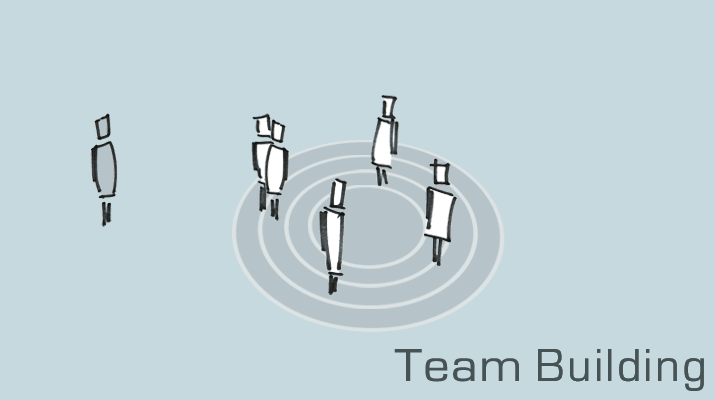
In every situation where Team Building is requested by a client, problems or conflicts are often a symptom of other underlying organizational issues. Inefficient processes, ambiguous roles, responsibilities and a lack of structure are just some possible causes. These causes are deeply rooted and often hidden.
The goal, therefore, can only be to eliminate these recurring conflicts at the root. My focus is first to analyze the work environment and its influence factors, and then to focus on specific issues including the quality of interaction between team members. This leads to lasting behavioral change in the team.
Conflicts in the team can be solved by the combination of team and organizational development. As a prerequisite the team must develop a real willingness to address critical points openly to find out what is really going on. My strength is to build an atmosphere of mutual trust. As soon as an awareness and a willingness to change are present, each influencing factor can be systematically considered and evaluated. In this way, "real" answers are found, which resolve conflicts permanently.
There are situations when two Team members may not get along or are not working well together. This type of conflict cannot be solved through a Team Building initiative. In such cases, mediation between the persons involved or individual coaching can lead to an improved situation. It should be checked beforehand, however, whether the employees are adequately qualified, processes defined and escalation and communication paths are clear, or if the employees behaviors are a sign of some other issue in their personal life which may be affecting their performance.
Before solutions can be found, mutual trust must be established within the group and between the team members and the moderator. On the basis of the value system of the group and the values of each individual, a formal Code of Conduct is developed. This provides a moral guideline for expected behavior and for resolving conflicts in the future.
In order to identify the causes of the conflict, detailed diagnostics takes place through individual interviews, group discussions and workshops. During these talks, it is important to remain objective, to manage strong personalities and prevent blaming. The key success factor in diagnostics is the organizational psychologists ability to understand each member of the groups concerns, needs and perspective with the utmost sensitivity and to interpret their behavior / and possible contribution to the problem.

The teams newly gained understanding of their colleague's personal needs and professional requirements, their tasks and problems improves the working environment and increases motivation: The real problems are identified and solved. The team works productively and respectfully again.
A shared value system includes rules on respectful interaction with each other. The resulting mutual understanding leads to a further advantage: If teams and their members are able to merge with one another in "everyday business", organizational culture can be changed in the long term.
Sustainable success can only be achieved if team members have built trust to be able to address problems / conflicts openly. This includes in particular dealing with issues at an emotional as well as an objective level.
"The Team Building was a valuable experience for my team and myself, and Dr. Graumann-Ubale quickly built up trust between the participants, which gave us the framework to openly and constructively discuss the issues of conflict in the team and prevent future conflict. The constructive, open and honest feedback among each other improved our cooperation and enabled us in the long term to come up with faster solutions.""
Holger Nestler
Former Plant Manger VW Pune, India
"Through Dr. Graumann-Ubale's pragmatic methods, we quickly identified areas of action in the team, and in a one-day workshop we were able to systematically work on issues of cooperation, leadership and organization.
I also had a clearer understanding of my role as owner, therapist and leader, and the expectations associated with those roles."
Markus Nöh
KUNOmed, Braunschweig, Germany
Everyone and their life is unique and dynamic. We are faced with new private and professional challenges, opportunities and decisions almost daily. We can consciously control some events in life, others are unpredictable. Making decisions or coming to terms with certain life situations is not always easy. The inner tension of contradictory feelings and thoughts are often confusing. It is at times difficult to clarify what we should or should not do.
Our feelings are the guide to our needs. Only then, the unconscious is made conscious. Recognizing, accepting and fulfilling our needs gives us orientation and inner satisfaction. Knowing our values and needs provides a foundation for decision making for all life's challenges.
Self-reflection, developing empathy, change of perspective and building trust are the essential parts of my coaching.
It would be my pleasure to support you through this process.
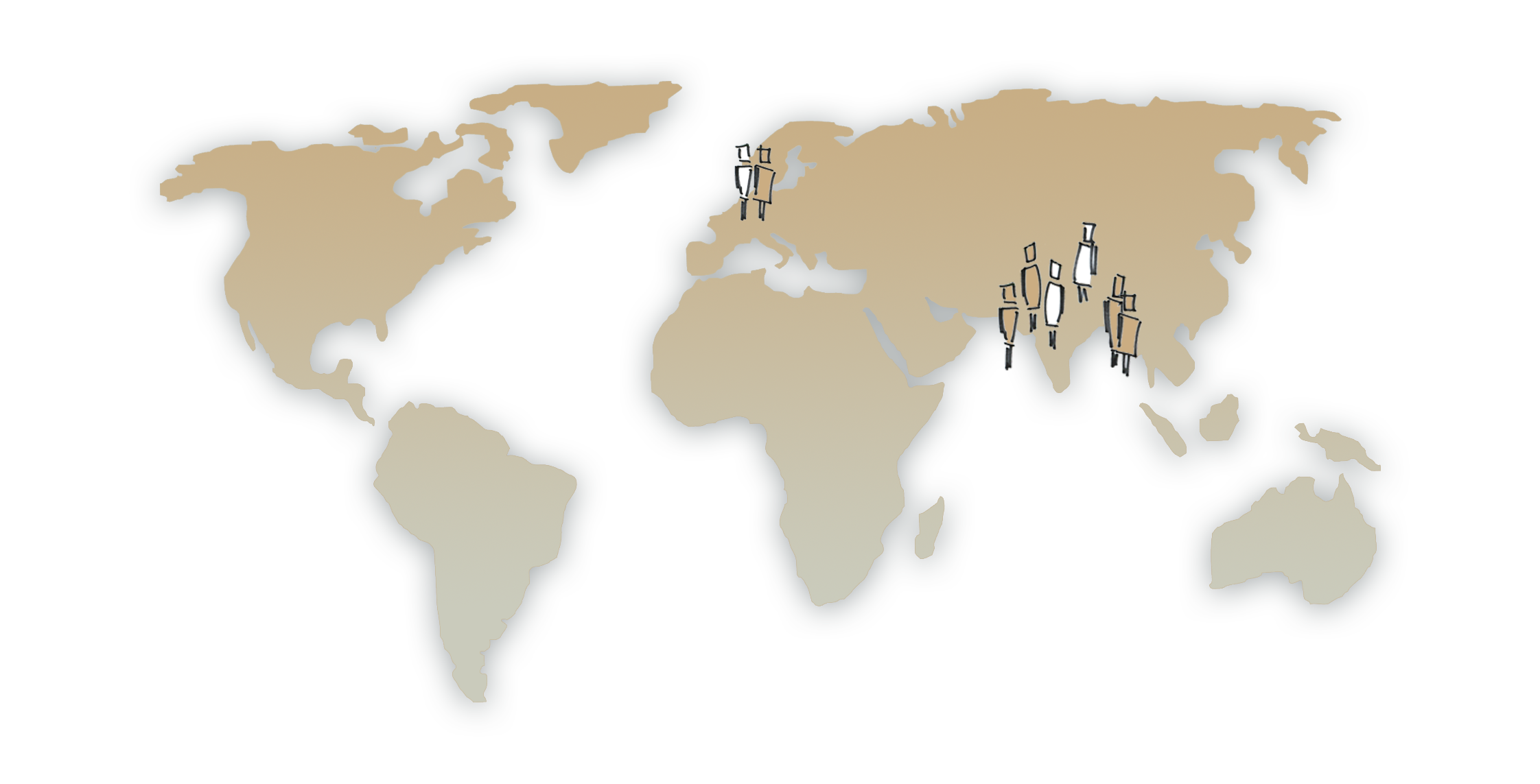
The modern Indian generation is young, industrious, mobile and qualified. Young Indian employees are often frustrated and demotivated because their needs, values and expectations are not met. These concerns and perceptions are often overlooked by both German and Indian managers and German foremen and specialists on assignment.
German companies often try to transfer their existing processes, structures and corporate values to other cultures. This is not always useful. The question to ask is which strategy is right for the market in question. Cultural specific strategies need to be developed to satisfy the needs of the employees and the needs of the customers. What can be transferred, adapted or customized?
Professional competencies and leadership experience are often rated higher than intercultural competence. In reality you need all three characteristics. Intercultural competence should be taught and monitored before and during an international assignment respectively, through individual coaching. The aim is to help employees reflect upon their personal values and beliefs. Intercultural competence is the ability to interact with every human being on an equal footing with acceptance, respect and appreciation, taking into consideration a person's country-specific social, economic, religious and cultural background.
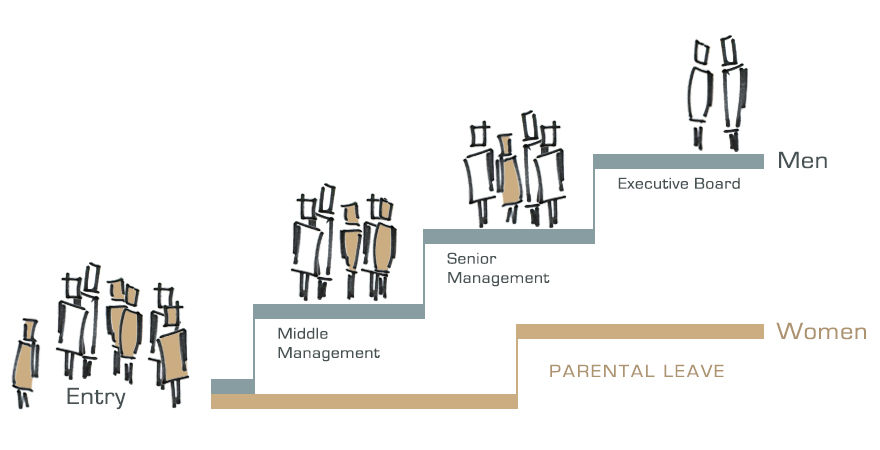
Women´s Leadership development programs are not able to bring women in leadership positions fast enough to change the gender imbalance or attract qualified applicants. These programs are not as successful as they could be, since they are often embedded in existing organizational structures and processes which reinforce old patterns of behaviour.
To promote more women into leadership positions, raising a family must be made compatible with a career in management.
Traditional role expectations, lack of support systems, affordable child care are some obstacles facing families. Our own unconscious beliefs regarding traditional roles and the incompatibility of raising a family and fulfilling a leadership role are values we also need to question individually and as an organization.
With every organizational cultural change old beliefs should be questioned.
The compatibility of family and a management career, equal career opportunities, equal pay for work of equal value, equal access to leadership positions, targeted HR marketing strategies, dual career and dual mobility reflect these forward thinking future-oriented initiatives.
New beliefs can only be permanently anchored by supporting structures and processes.
Promoting more women in leadership positions is a top-down process that requires a fair balance of interests. This involves the participation of all employees, HR, works council and all management levels to ensure cultural change.
A change management plan is essential to address ideas, fears, doubts and complaints from your employees.
Change hast to occur with speed, at all levels of the organisation and simultaneously. New ways of working, reverse mentoring for high potentials and young women in schools, apprenticeship programs, colleges and universities, gender-neutral job descriptions, fast track programs - accelerating the development of leadership skills of young women and a redefinition of the company´s leadership profile to reflect masculine and feminine traits are examples of parallel multilevel initiatives.
Raising children should not be a career disadvantage for those who work full time or those parents who choose to stay at home. Men also need to have the opportunity to meet their family and children’s needs, without compromising their personal careers.
Your company needs to decide on the right approach.
The necessary cultural change required to promote more women into leadership positions entails many challenges - but also opportunities for innovation, more efficiency and effectiveness!

Born in London in 1964. Grew up in the UK and Canada. Lived over 25 years in Germany. Married with one child. Since 2009, I have been working as an independent consultant in the field of Team Building for teams of different hierarchies and branches.
Head of Organization and Management Development
Metro Cash & Carry / Metro Group
Experience: Leadership, Human Resources operational management, multiple project management, international succession planning for management and executive management.
Head of Organizational Development
Volkswagen AG / Werk Pune, India
Experience: Team Building intercultural and interdisciplinary teams, coaching.
Organizational Psychologist
Ausbildungswerkstatt Braunschweig e.V.
Experience: Potential analysis, coaching long-term unemployed
International Human Resource Officer
Weidmüller Interface GmbH & Co.KG
Experience: Assessment Center, recruitment, compensation, Trainee Program.
Human Resource Assistant
Volkswagen AG / Human Resources Management and Controlling
Experience: Reporting, HR controlling, International assignments.
Doctorate (PhD) in Organizational Psychology.
Dissertation: The Impact of Culture and Gender on the Use of Power and Influence in Organizations in Germany, USA, Australia and India.
Experience: Empirical research, 200 personal interviews, intercultural competence, analyzing behavior and interactions in organizations.
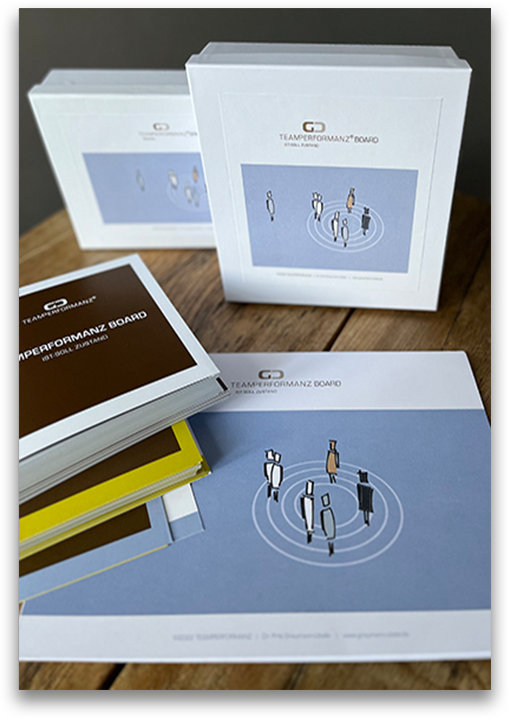
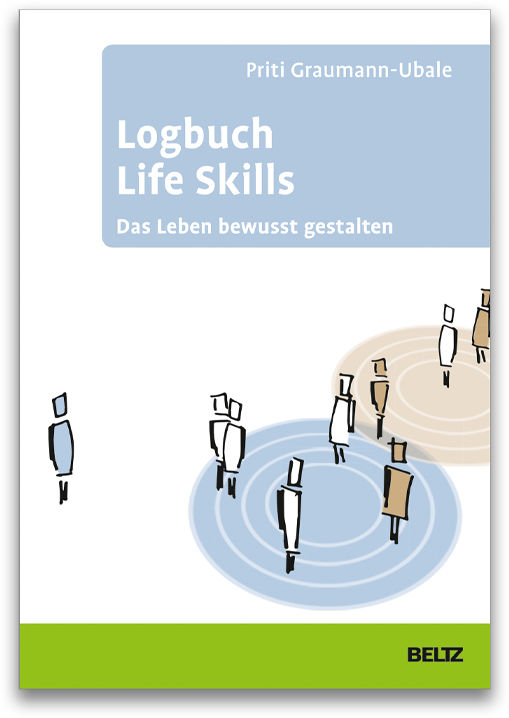
The acquisition of a multinational company required the organization to integrate two organizational cultures. To avoid poor performance, the departure of key executives and conflict, the company began to focus on eliminating potential cultural barriers. In a worldwide dialogue with 60000 employees, including the Board and Country Management, a new mission statement and code of conduct were developed within a year.
In addition, core processes were newly defined and a 360 degree feedback instrument was developed for the management which was linked to the new code of conduct and the mission statement. These interventions ensured that operational efficiency was embedded in the newly defined culture. The project was honoured in the USA with the Franklyn Covey Prize in 2002.
The greatest challenge in Greenfield projects is to maintain a high level of quality as the production volumes increase and new cars are launched. To cope with this challenge at the plant in Pune, India, workshops were conducted with several departments: Logistics, Production, Manufacturing Engineering, Finance, Communication, Quality, Purchase, and Product Development.
The major problems resolved were in the areas of handover of machines and processes between departments or colleagues, reduction of downtime, developing formal communication structures, clarifying roles and responsibilities, and resolving conflicts. The participants of the workshop included the Director and his/her Heads of Departments.
The technical managing director's objective was to strengthen trust among his team members and create a shared sense of ownership to resolve some inherent problems that typically face a newly built factory. Additionally, he wanted his team to take shared responsibility for solving actual problems. Within the span of one year, five team development sessions took place.
The first task was to develop a common set of working values and visibly document them in the company. The other two sessions were focused on giving and receiving feedback on actual behaviour versus the desired code of conduct. During the fourth session the team continued the feedback process, in addition to prioritizing their targets for the current year and the following year.
The result of the Team Building process ensured that decisions were made faster, conflicts minimized and resources shared when required. Demonstrating a true sense of team spirit, the team is especially proud of their last session in which they initiated and actively participated in a Corporate Social Responsibility Project in an orphanage in Pune, India.
To meet the different needs of families, a Preschool had grown rapidly, both in staff and services over a period of 3 years. The services expanded from one preschool group to two groups, a crèche for babies, and a play group for 2-3 year olds, a mother and child group and an after-preschool day care program. The staff went from five to twelve persons in just a short period of time.
Although the preschool was a non-profit organization, it still faced the challenges of generating profits in order to invest in infrastructure, training and hiring more staff. The challenge was, as in most rapidly growing organizations, to develop a business model that could sustain profits for investment purposes. The new model was accompanied by process standardization and optimization, and prevention and minimization of conflict.
In keeping with the Anthroposophical approach to life and learning, which is at the heart of this organization and in the hearts of the staff, workshops were conducted with the executive board and entire staff over a period of three years to achieve the set objectives.
One of the challenges facing most doctors is the business side of their practices, specifically the operational efficiency and staff management. This was also the case in a practice in Germany. The doctor wished to minimize the long waiting time that patients sometimes had to endure.
The major contributing factors were: many patients often did not keep their appointments, unscheduled "walk-ins", routine tests were not coordinated in one visit, examination rooms were blocked for routine tests and there was a lack of delegation. Through the process of coaching and one workshop, the staff were able to develop and implement a new appointment allocation system.
The patients were grouped according to needs and allotted specific times. For example, unplanned appointments were allocated a time in the morning and afternoon, screening tests were conducted 3 times a week, and a buffer was planned twice a day. The new system ensured a better work flow, patient service and satisfaction, and reduced the amount of overtime for both the staff and the doctor.
After a successful joint venture, the German parent company decided to take over the joint venture in India. This acquisition generated high expectations on the part of management, employees and customers. They expected a greater degree of standardization, greater efficiency, integrated systems, a better sales network, a more targeted approach to sales and aftersales, improved warranty services and a more efficient customer order process.
To meet these expectations, a "team spirit" and a co-operative culture between the Sales Team and the After Sales Team had to be developed. The two teams had to internalize the basic idea of performing as one department towards the customer.
In a workshop the entire regional management team worked on an operational implementation plan. The result was a high degree of commitment from all stakeholders, an open dialogue to resolve conflicts and the joint commitment to implement the measures defined in the workshop in a 100 day plan. The collaboration had also been strengthened by structural changes, a new communication structure and improved coordination at key interfaces such as point of sales and the customer order process.
Profitability and long-term customer relationships are a challenge in any industry. The market has changed especially in the hotel industry, from a homogeneous market segment with customers with similar needs, to a heterogeneous market segment with customers with different needs. There is also the additional challenge that a customer often embodies several roles, each role being accompanied by a different set of expectations.
In a workshop, the Executive Board with their direct reports developed several ideas to improve customer satisfaction for business customers, women, tourists, single travelers and families, to increase customer loyalty and reduce costs. Through Customer Profiling, the staff were able to provide more customized and innovative services for specific customer segments.
Quality assurance and management as a service company also requires quality assurance in their own processes and organization. The expansion in India has been very successful to date. The success is based on clear goals of good leadership and highly qualified staff.
The aim of the workshop was to bring together a new team whose members were geographically widespread. The team should develop a common "we" feeling and create measures to sharpen the company's brand and increase the level of recognition in the Indian market.
The result was the development of a "modular system for quality management systems". It contained standardized services, which could be adapted to the respective customer requirements. Through a common goal the team were given the opportunity to form a group identity.
References are available on request.